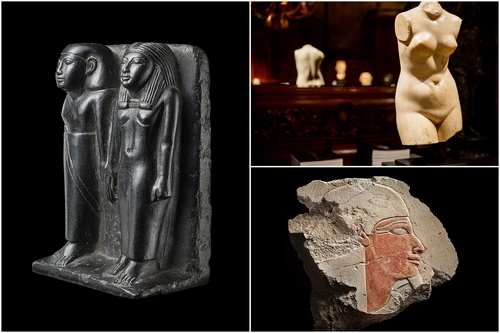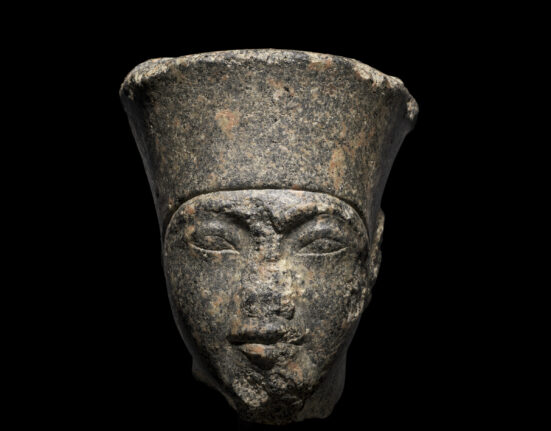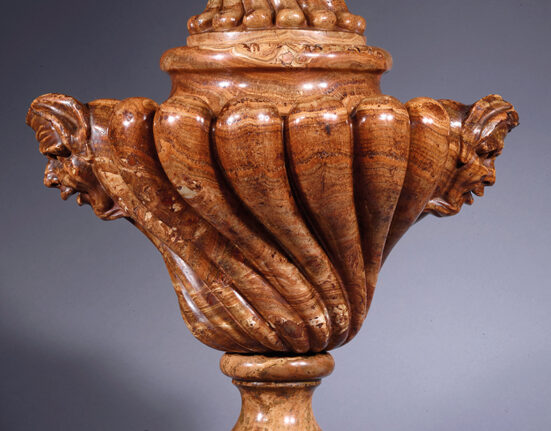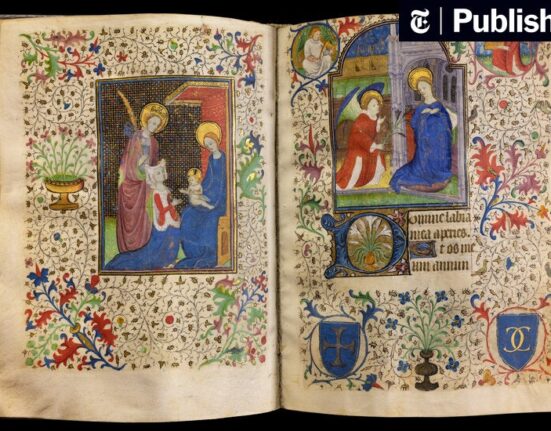The European Fine Art Fair (TEFAF), one of the world’s largest art fairs, has come to its second year in New York. Established in 1988, TEFAF is an annual art, antiques and design fair organized by the European Fine Art Foundation in Maastricht, Netherlands. With exhibitors from the world’s leading galleries from 20 countries, TEFAF showcases museum-quality pieces ranging from classical antiquity to the 21st century.
In 2016, TEFAF announced plans to hold additional fairs in New York. Its fall edition in 2017 has just come to an end. We are going to introduce some highlights of TEFAF by different categories. We introduced some great masterpieces in the category of Old Master paintings in our previous article. This time, we are going to share some highlights of ancient art.
Highlights of Ancient Art
RELIEF FRAGMENT DEPICTING A NILE GOD
Egyptian, New Kingdom, Eighteenth Dynasty, Reign of Hatshepsut, Circa 1479-1458 BC
Exhibitor/Gallery: Ariadne Galleries
Size: 12.5cm
Noted by The Value:
The Eighteenth Dynasty of Egypt is the first Dynasty of the Ancient Egyptian New Kingdom period. It was ruled by several Egypt’s most famous pharaohs, including Ahmose I, Hatshepsut, Thutmose III, Amenhotep III, Akhenaten and Tutankhamun. This relief fragment depicting a Nile god was created in the reign of Hatshepsut, the first female ruler of ancient Egypt.
COUPLE OF DIGNITARIES.
Egyptian, Middle Kingdom, 2nd Intermediate period – 13th Dynasty (ca. 1802 – 1650 B.C.)
Exhibitor/Gallery: Phoenix Ancient Art
Size: 11.5 x 8.5cm
Noted by The Value:
Miniature family portraits became popular in Egyptian art towards the end of the Middle Kingdom, when the tradition to place them in the tomb was expanded from the exclusively pharaonic prerogative to a wider social group. Looking at the way the two figures hold their hands, we can tell they are husband and wife. Despite the small scale of the sculpture, it is marked by many individual details and skilful precision in the carving of the hard stone.
STATUETTE OF OSIRIS WITH INLAID EYES. BRONZE, INLAID WITH COPPER, SILVER AND NIELLO.
Late Dynastic Period, 26th Dynasty, Circa 600 BC.
Exhibitor/Gallery: Charles Ede
Height: 18.5cm
Noted by The Value:
The 26th Dynasty is often regarded as the last gasp of a once great culture before the power of Egypt steadily diminished. Osiris is an Egyptian god of the afterlife and resurrection. He is commonly depicted as a pharaoh with a complexion of either green (the colour of rebirth) or black (alluding to the fertility of the Nile floodplain) in mummiform, wearing the Atef crown with two curling ostrich feathers at each side. He also carries the crook and flail, which symbolize his role as a shepherd god.
According to the ancient Egyptian belief, after one died, the ‘heart’ of the soul had to be weighed and see if one could pass through the judgement by Osiris. He placed the heart on a great golden scale balanced against the white feather of Ma’at, the feather of truth, on the other side. If the soul’s heart was lighter than the feather, then the soul would be freely admitted into the bliss of Reeds. If the heart was heavier, it would be devoured by Amenti.
INCISED MIRROR WITH BONE HANDLE, SHOWING THE DIOSCURI
Etruscan, 4th century BC
Exhibitor/Gallery: Charles Ede
Size: 29cm
Noted by The Value:
Maybe you are not familiar with the name “Etruscan”. It is a modern name given to the civilization of ancient Italy in the area corresponding to Tuscany. Mirrors such as this are often found in tomb burials. In Greek mythology, the Dioscuri are the twin brothers Castor and Pollux. The former one was the mortal son of the king of Sparta while the latter one was the divine son of Zeus.
ANATOLIAN IDOL. MARBLE.
Kusura Beycesultan variety, Early Bronze Age, circa 2700-2100 BC
Exhibitor/Gallery: Galerie Kevorkian
Size: 15.3cm
Noted by The Value:
Anatolian idols of such example have been understood as mother goddess figures. It is possible that Anatolian idols were used for ritual purposes. In April 2017, Christie’s sold an Anatolian marble female idol named the Guennol Stargazer for US$14.47m, leading to a lawsuit from Turkey’s government who believed this relic is a stolen item smuggled from Turkey.
MODEL OF A HORSE. TERRACOTTA.
Greek, Boeotia, mid 6th century BC
Exhibitor/Gallery: Charles Ede
Height: 18.4cm
Noted by The Value:
Don’t mistake it for a giraffe though it has an unusually long neck. It is a model of a horse, possibly a toy at that time.
THE BEHAGUE CAMEO HORSE. ONYX.
Roman, first century BC – first century AD
Exhibitor/Gallery: Phoenix Ancient Art
Size: 4.5 x 5.8cm
STATUE OF SILVANUS. GREEK MARBLE WITH ANCIENT RESTORATIONS.
Rome, first century A.D.
Exhibitor/Gallery: Galerie Chenel
Size: 185 x 72 x 33cm
A HEAD OF VENUS (CAPITOLINE TYPE). MARBLE.
Roman, 1st cent. A.D.
Exhibitor/Gallery: Cahn International
Height: 31.5cm
DIONYSUS WITH PANTHER. MARBLE.
Roman Empire, 2nd century AD
Exhibitor/Gallery: Axel Vervoordt
Height: 72.5 cm






